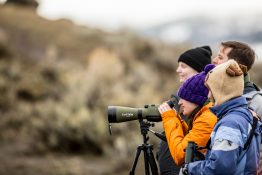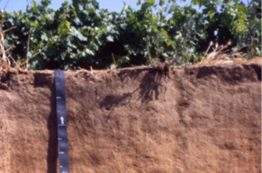Pingos? Forbs? Dibbles? Researchers and students within the College of the Environment frequently encounter silly sounding words in their work and studies. We’ve gathered some of the goofiest words and made a quiz to test your knowledge. Dive in to see if you are truly a scholar of the silly things that help us understand the environment around us! [streamquiz id=”1″ hide_title=”1″]
Read more »Outlook for the polar regions in a 2 degrees warmer world
With 2019 on pace as one of the warmest years on record, a new international study reveals how rapidly the Arctic is warming and examines global consequences of continued polar warming. The study, published Dec. 4 in the journal Science Advances, reports that the Arctic has warmed by 0.75 degrees C in the last decade alone. By comparison, the Earth as a whole has warmed by nearly the same amount, 0.8 C, over the past 137 years.
Read more at UW News »A day to celebrate the magic of soils
In 2013, the United Nations designated December 5 as World Soil Day. The date coincides with the birthday of the late King Rama IX of Thailand, a leading global advocate for the promotion of healthy soils and sustainable soil management. This World Soil Day, we’re digging into the history of soil science and looking ahead to see what the future holds for the oft-overlooked hero of our terrestrial ecosystem.
Read more »Better wildfire and smoke predictions with new vegetation database
It’s hard to find a place in the U.S. that isn’t impacted by wildfires and smoke. Dry landscapes, warmer temperatures and more development near forested areas all contribute to massive wildfires across North America each year. Smoke and haze from these fires can travel hundreds of miles from their source, affecting the health and wellbeing of communities across the U.S. Given these impacts, scientists rely on models that try to predict the severity of wildfires and smoke.
Read more at UW News »For some corals, meals can come with a side of microplastics
Tiny microplastic particles are about as common in the ocean today as plastic is in our daily lives. Synthetic clothing, containers, bottles, plastic bags and cosmetics all degrade and release microplastics into the environment. Corals and other marine organisms are eating microplastics that enter the waterway. Studies in this emerging field show some harmful effects, but it’s largely unknown how this ubiquitous material is impacting ocean life.
Read more at UW News »





